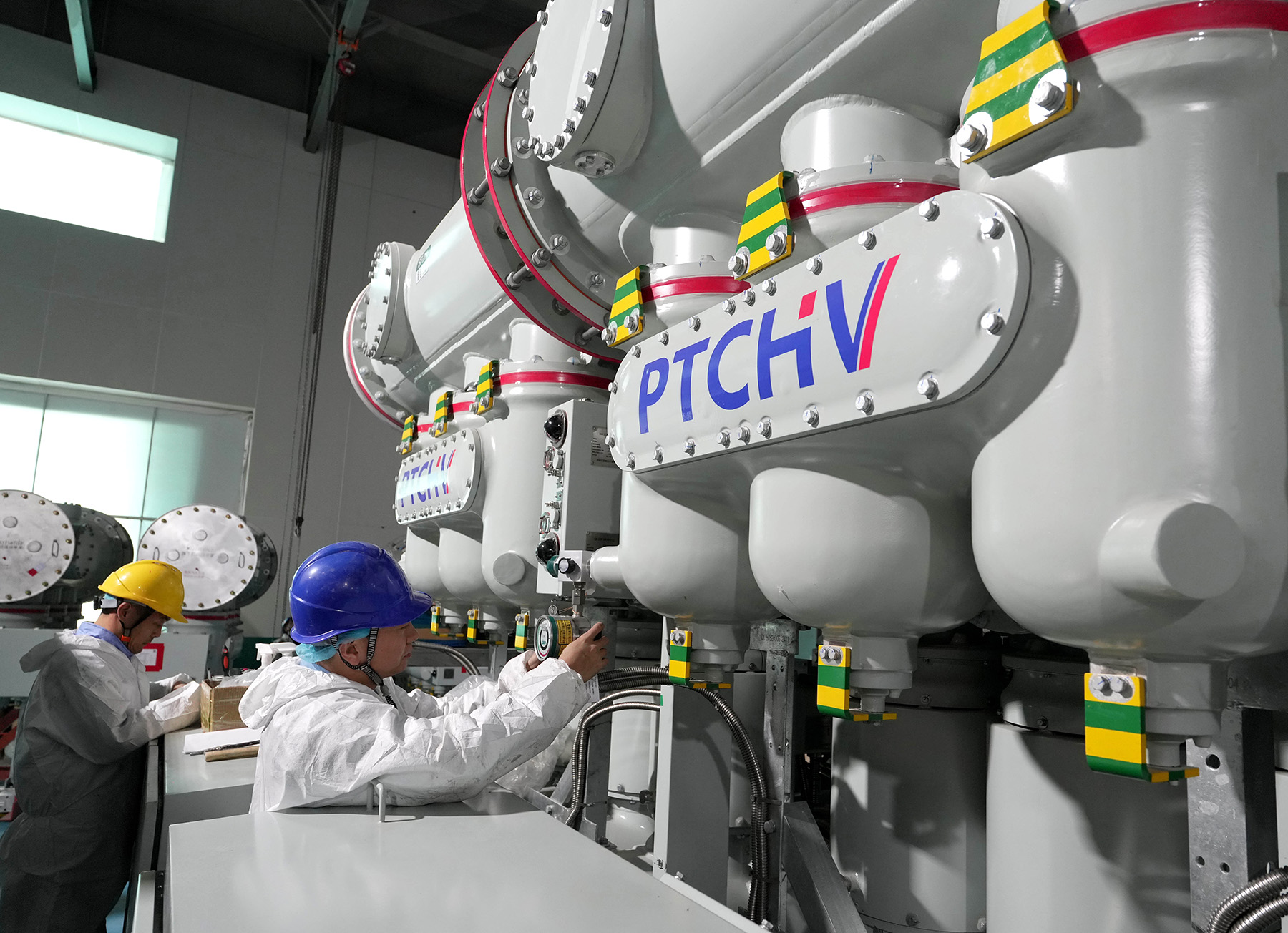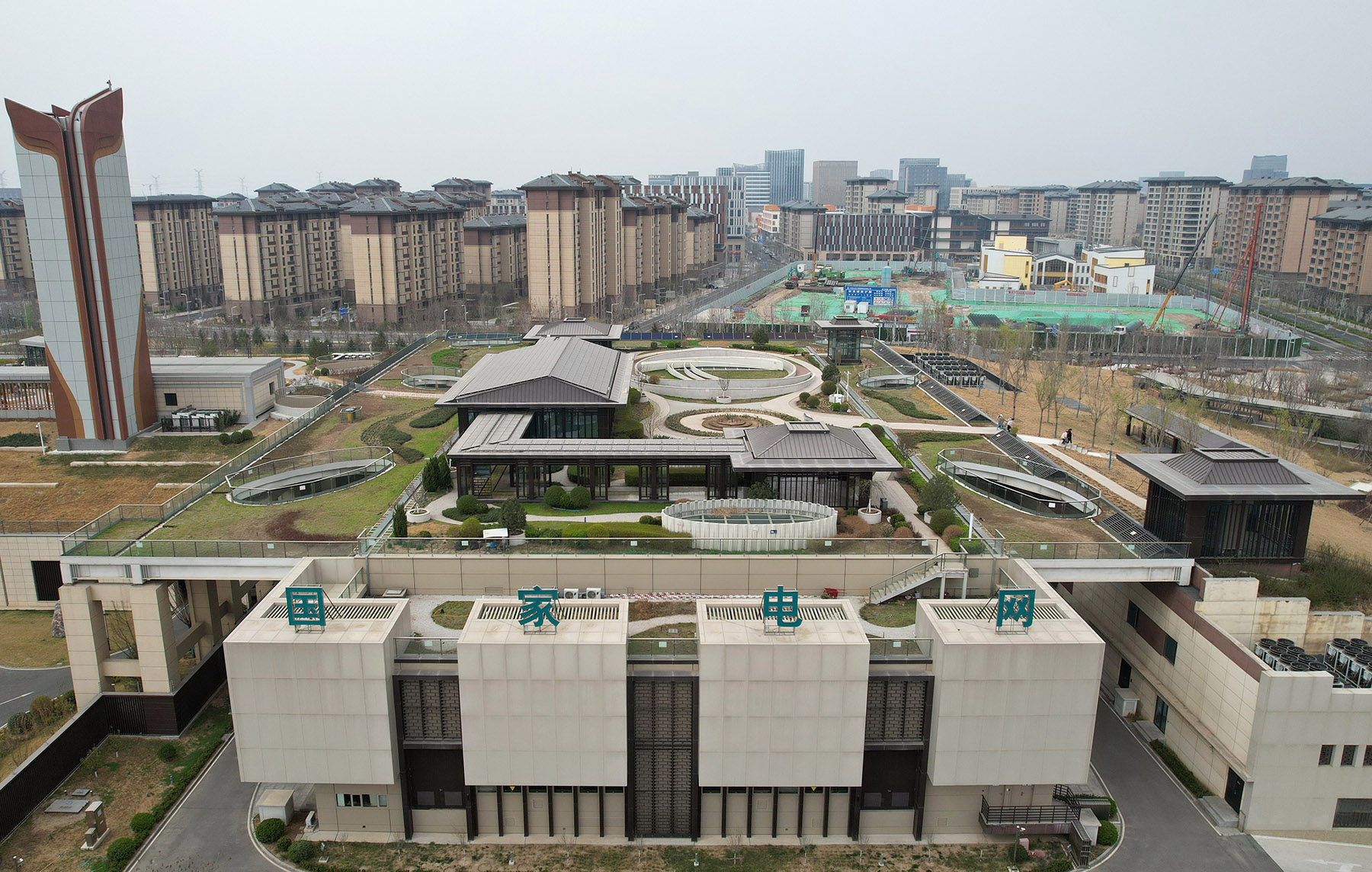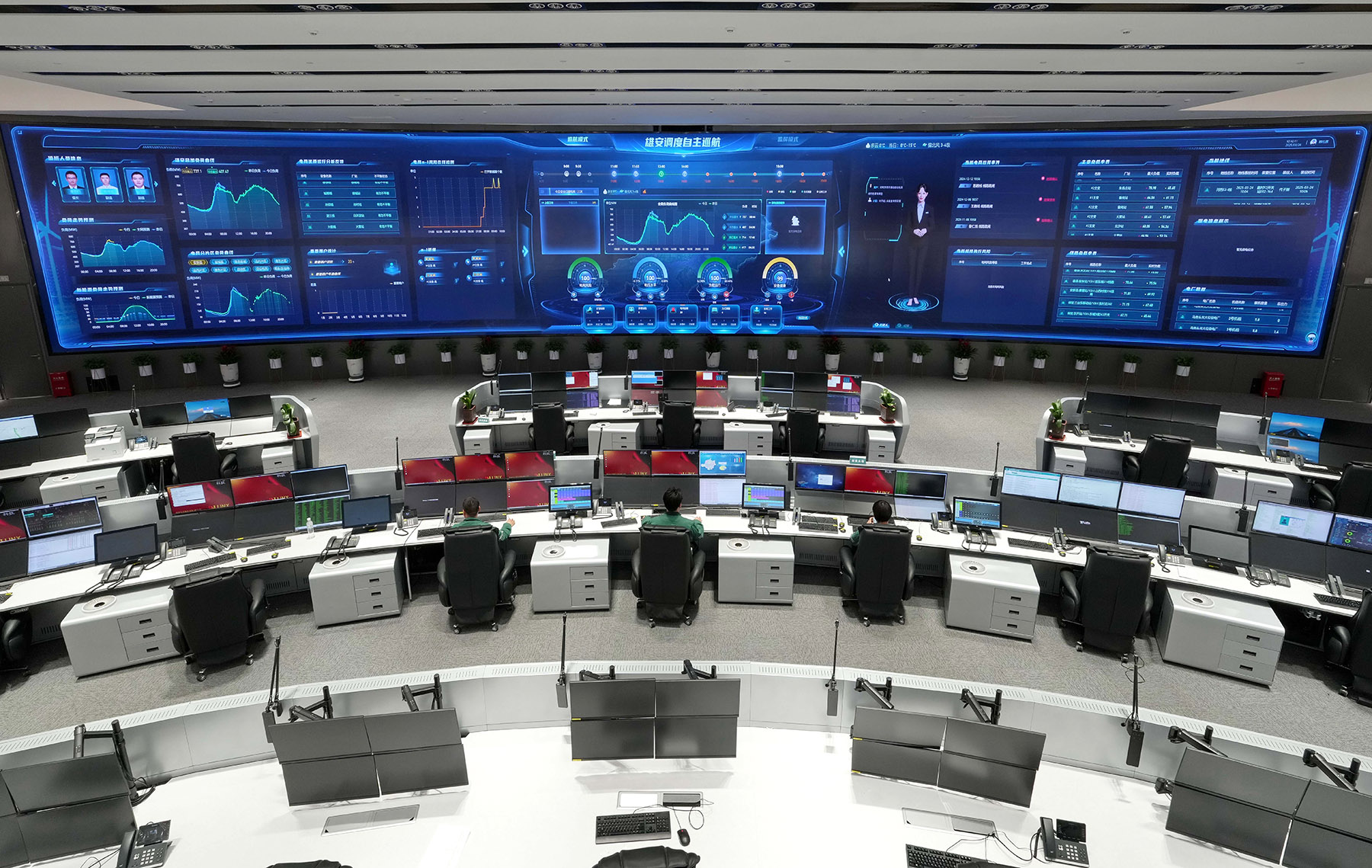Clean power generation put at forefront of Xiong'an New Area's urban planning

Editor's note: China Daily is publishing a series illustrating the country's efforts to achieve its carbon peak and carbon neutrality goals.
Looking at the sprawling Xiong'an Business Service Center complex from a distance, the tiles on the roofs of some of its buildings appear no different from those on other structures.
A closer inspection, however, reveals a fascinating secret: interspersed among the tiles are photovoltaic panels that seamlessly blend with the traditional Chinese design.
In total, some 28,400 solar panels, each measuring 117 centimeters in length and 30 centimeters in width, have been installed on the roofs of six buildings in the complex, said Huang Wenchang, an executive with China Xiongan Group, the operator of the center.
"Placed together, the solar panels would span an area of 1.4 standard football fields," he said.
READ MORE: Xiong'an: An emerging hub of innovation, livability
These panels are expected to generate about 700,000 kilowatt-hours of electricity a year, and are currently able to meet 5 percent of the electricity demand in the complex, he added.
Xiong'an New Area in Hebei province marked its eighth anniversary on April 1.
Almost a decade on, this grand urban planning project is upholding its commitment to green, low-carbon development in its energy system.
A 2018 planning outline said Xiong'an would advance green, low-carbon production, lifestyles and urban development — aligned with the concept of sustainability, smart technology and innovation.
In the past eight years, Xiong'an has made encouraging progress in harnessing its local renewable energy resources, particularly solar power, according to a statement from the Xiong'an development and reform bureau, responding to China Daily.
The installed capacity for new energy generation in the new area has reached 274,700 kilowatts, as the local authorities promote the integrated development and utilization of "photovoltaic+" technologies, combining solar with other technologies or applications to enhance their effectiveness and usability in different scenarios, it said.
The new area's comprehensive bonded zone also stands as a potent example demonstrating the progress.
A distributed photovoltaic project with an installed capacity of 3.1 megawatts has been operational in the zone since the end of last year, fully utilizing 30,000 square meters of rooftops, according to Datang Environment Industry Group Co, the operator of the project.
Su Changda, deputy general manager of the group's New Industry Investment and Operation Branch, highlighted the project's environmental and economic advantages, noting that it not only cuts carbon emissions, but also substantially lowers electricity costs for companies in the zone.
The project is expected to annually generate nearly 3.5 million kWh of electricity, he said. Compared with coal-fired power generation, it can mitigate the use of more than 1,062 metric tons of standard coal per year.
This means that the emissions of almost 2,929 tons of carbon dioxide, about 92 tons of sulfur dioxide and roughly 46 tons of oxynitride will be avoided in the project's annual operation, he added.

Power generated by the project will first be used to meet the demand of companies in the zone, with the surplus electricity fed back into the grid, he said. During its designed lifespan of 25 years, it will significantly mitigate the zone's peak load on the grid.
The project uses a tiered electricity pricing model, where higher consumption from the distributed solar system leads to lower per-kilowatt-hour rates, he said. During daytime hours, companies in the zone benefit from a discount of approximately 0.3 yuan (4 cents) per kWh.
Su commended the Xiong'an authorities for their favorable policies and remarkable efficiency in handling the project's administrative procedures, from approval to final acceptance. He noted that the time required for these processes was significantly shorter compared to the company's similar projects in other regions, without going into details.
"Building on this project, Datang Environment Industry Group will keep expanding investments in Xiong'an New Area and proactively engage in green energy and smart city development, contributing to the building of a 'city of the future'," he said.
Xiong'an New Area is making significant strides in its mission to become a green modern city, said Kong Tao, deputy head of the new area's reform and development bureau.
In a recent interview, Kong detailed the progress Xiong'an has made in building a sustainable and efficient urban energy system, with green energy not only locally generated but also transmitted from external sources.
He said that the new area has developed a robust green power transmission system, utilizing channels of two newly constructed networks in central and southern Hebei, as well as in the northern part of the province.
These infrastructures ensure a stable and secure supply of electricity to the new area, he added.

The power transmission channel from northern Hebei, for instance, helps transport green power from Zhangbei, a county in Hebei that is rich in wind and solar power resources.
Kong listed a series of pilot and demonstration projects launched in the new area to build green, zero-carbon smart energy systems, including the Xiong'an Energy Internet Innovation Center of the State Grid.
He said these projects use solar power and tap into geothermal and other renewable resources, such as air-source energy, and that Xiong'an aims to develop a green, low-carbon and efficient urban heating system, powered by the integrated use of diverse energy sources.
The innovation center is still under construction, and without any decoration, the concrete exterior of its main structure currently appears dull under the sunlight.
In his office just across the road, Xu Huiming, operations director of State Grid Digital Technology Holdings Co's subsidiary in Xiong'an, however, paints a bright vision saying the center would achieve zero carbon dioxide emissions mostly by itself.
Aside from traditional solar panels, there will also be 245 sq m of solar energy floor tiles installed on the rooftops of buildings in the complex, according to the company.
The photovoltaic system will help the complex reduce carbon dioxide emissions by 1,367 tons annually, which is approximately 12.7 percent of its total expected emissions. The adaptation of energy-saving lighting system, office equipment and smart maintenance management is expected to further reduce emissions by nearly 18 percent, Xu said.
The heating, ventilation and air conditioning system, which incorporates high-performance thermal insulation materials and structures, and is powered by geothermal and solar energy in conjunction with a chilled and hot water storage system, will also reduce the project's emissions by 31.3 percent.
Xu said the project will purchase green electricity and carbon credits to offset the remainder of its emissions.

He emphasized the role of a direct current distribution system in improving electricity consumption efficiency at the center.
Solar power generation produces direct current, which typically needs to be converted to alternating current for use by common electrical appliances. However, this conversion results in energy loss, he noted.
He said in this project, many electrical facilities, such as lighting, charging piles and air conditioning units, utilize direct current distribution, thereby avoiding these losses.
Looking ahead, Kong, the official at the Xiong'an development and reform bureau, envisions the new area as a global pioneer in sustainable energy.
ALSO READ: Beijing-Tianjin-Hebei region progresses in coordinated development
To achieve this, Xiong'an is accelerating the development of a standardized framework for green energy. A dedicated technical committee comprising top energy experts has been established to advance research into a modern, replicable urban energy standard system.
The new area has so far introduced five key policies to drive its low-carbon transition, including plans for near-zero-energy buildings and hydrogen application pilot programs. These measures aim to create a comprehensive support system for clean energy development.
"Firmly adhering to plan-led development, Xiong'an New Area is accelerating the construction of a secure, stable and green energy supply system alongside an efficient energy utilization framework, aiming to establish a world-class model for urban energy systems," he said.
Zhang Yu contributed to this story.


